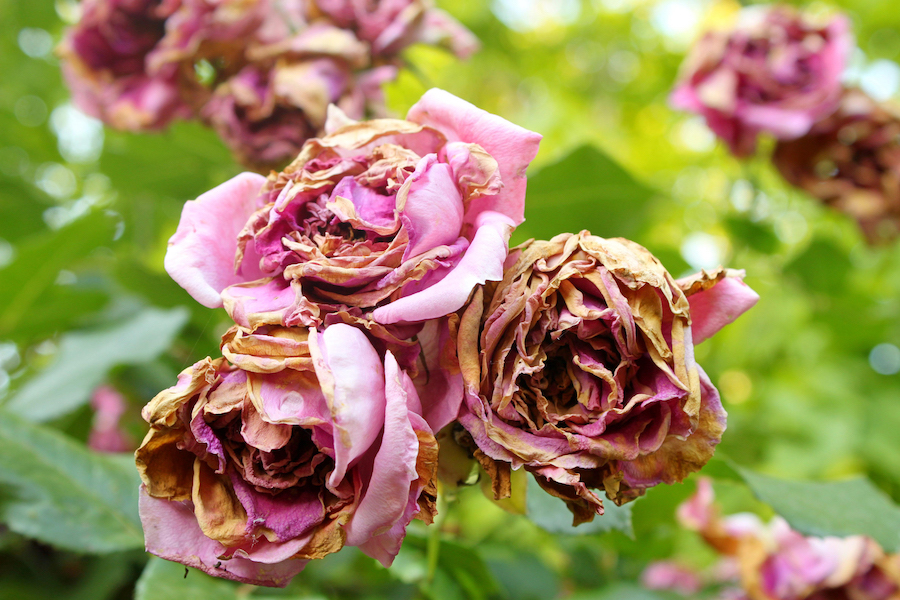What’s wrong with my roses?
Rose specialist Philip Harkness examines common problems and offers solutions
It’s peak rose season, when the beautiful blooms of our favourite flowers should be providing a mass of colour and fragrance to the garden.
But what if the leaves of your prized roses are yellowing, the blooms are small or the plants look lacklustre?
Watch: How to prune roses with Peter Mills
Philip Harkness, co-owner of Harkness Roses, which launched five new roses at this year’s RHS Chelsea Flower Show, says prevention is better than cure.
View this post on Instagram
“Prevention is easier, so make sure you have sunlight and the roses aren’t in places which are too dark and overcrowded.
“If they are near a big hedge, they are going to be struggling for water and for light. If the plant is under stress it is more prone to become unhealthy. Think of plants as people. They do suffer stress in hot, dry conditions and if there’s competition.
“If you get the underlying culture and environment right for them, they should fare far better than if they are undernourished, underwatered or overwatered.”
A good feeding regime – give roses a liquid feed once a fortnight – along with ensuring good air flow around the plant and watering regularly in the morning, especially if your roses are in pots, should help their health, he says.
Nevertheless, gardeners may have to tackle some common rose problems…
Black spot

“This airborne fungus is the most common disease. You’ll get a black marking on the leaf, after which the leaf will go yellow on the outside and then it will fall off,” Harkness explains.
“It usually appears just after the first flowering, because the plant’s put all its energy into flowering and not enough energy into defending itself.
“If you gave roses a granular feed, which takes time to get into the soil, in the middle of May and June, and they finish flowering in July, the granular feed will just be getting down to the roots at the time the flowering is finishing, and just give them another boost. Use a rose fertiliser early June which will help the plant in mid-July.”
You can minimise the damage of black spot by encouraging the plant to make new young growth, he advises.
View this post on Instagram
“When you’ve deadheaded your first flowers, if you’ve got black spot, instead of deadheading a little bit, give your rose a summer prune – cutting half of the stem off – which will make it develop new shoots which are a bit lower down which will have a good resistance to black spot because the young new growth is a bit better at defending itself than the older leaves.”
You may also find roses which are more resistant to black spot, while a sulphur application – powder is available from garden centres – is also a good fungicide and harmless to the environment, he suggests.
Rust

“This is another airborne fungus which tends to come later in the season, in late summer and early autumn.
“On the underside of the leaves you get a little orange pustule and as it matures it turns black. The only thing you can do is take the leaves off. It’s usually the lower leaves which are attacked. It’s best to learn to live with it than blast it with chemicals.”
Mildew

This fungus causes the leaves to go white and dusty, Harkness explains. “It is prevalent usually from August onwards, although the weather keeps changing.”
There are two causes – when the rose is in a damp, moist atmosphere; or where the plant is too dry at its roots if it’s hot.
“It usually appears on a stem that’s waiting to flower and you might as well let the flower bloom and then cut back down the stem.”
Greenfly

“With greenfly, I’m keen on prevention. You can spray with a garlic product because they don’t like garlic.
“If you do get greenfly, spray them with a weak solution of washing up detergent, which will break down the surface tension of the water and forms a film which makes the water cling to the greenfly and drowns them.”
Flower damage

Flowers which form in hot, drought conditions may shrivel, while insects such as caterpillars may eat a hole in the bud of flowers, deforming them, he warns.
“Western flower thrip nibbles the top of the petals, which will emerge with a brown edge to them. They are two millimitres wide and two millimitres long – they are tiny and you can only see it if you turn the flower upside down and tap it into your palm and see a dozen tiny wriggly insects in your hand.”
Can diseases survive winter?
“Yes. Give the plants a winter wash – again available in garden centres – while the plants are dormant, so you are starting with a clean slate the following year.”
Under pruning

Prune your roses to revive them
People are often reluctant to prune their roses hard, but if you prune them hard enough you get bushier, sturdier plants (with the exception of climbers), Harkness says.
“If you are having problems with your plants, when you prune them in the spring, cut off 30% or 40% more than you think you should.”
The Press Association
Latest posts by The Press Association (see all)
- Actor Richard Chamberlain dies aged 90 - March 30, 2025
- 5 new books to read this week - March 26, 2025
- 6 things a physio wishes people over 60 would stop doing - March 25, 2025
- NHS reminder to 7.5m people as Covid-19 jab booking system opens - March 25, 2025
- The truth about cholesterol – what you need to know - March 25, 2025




















